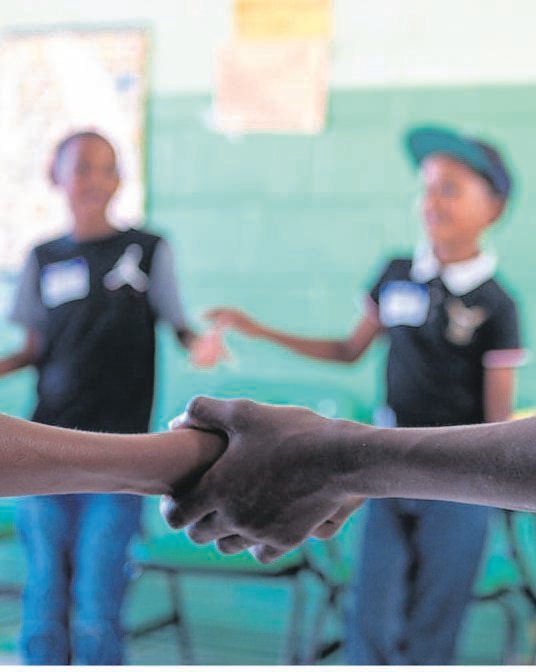Read our latest news article published in Paarl Post on Child Protection on 4 June 2021: https://www.netwerk24.com/ZA/Paarl-Post/Nuus/a-chance-to-protect-future-leaders-20210602-2
Mariette Jacobs, our MD was interviewed on Child Protection:
Why is Child Protection so important?
I think it was L Frank Baum who said, “In all this world there is nothing so beautiful as a happy child.” Every child matters, and every child deserves to be happy. Yet children are so vulnerable, because so many aspects of their lives are influenced by the decisions and actions of adults – whether good or bad. Sadly, so many children in South Africa face unthinkable neglect, abuse and violence on a daily basis.Most adults have some contact with children, whether as a parent, family member, neighbour or even in working with children. We therefore have a collective responsibility to make sure children are safe and can grow up in environments where they can reach their full potential. We all need to be a voice for the vulnerable and do everything we can do to change the tide so that children feel that they really matter. I always say that every decision and action must be in line with the most important principle of the Children’s Act: Is this decision or action in the best interest of the child? We must remember that we have a golden opportunity to empower children as the next generation of leaders, but we must first ensure that children are safe and protected.
What is a Child Protection Policy?
A child protection policy in its most basic form is a working document that guides an organisation’s workers on how to keep children safe. It outlines procedures for how the employees and volunteers must be screened, appointed, trained and managed to ensure that everyone in the organisation acts in the best interest of children all the time. Each organisation must have their own policy suitable for their context and train their staff team to implement it consistently. Ultimately, the implementation of a child protection policy is only successful to the extent that it establishes a child protection culture within the organisation.
How can organisations implement Child Protection Policies?
There are actually a few steps related to the implementation of a child protection policy. The first step is to develop a child protection policy that is specific to the context of the organisation and covers all the areas of work with children. The second step is that the board must approve and adopt it. Thirdly, the leadership of the organisation must ensure that the staff team is properly trained on the implementation and fourthly the implementation must be monitored. Finally, the policy needs to be reviewed every few years to ensure that the policy remains updated.
May organisations display photographs of children publicly?
We must remember that apart from legal obligations mandated by the POPI Act and other pieces of legislation such as getting consent from the parents, there are also so many other safety and risk factors to consider. We actually have a protocol available on Ezrah’s website resource page (see https://ezrah.co.za/child-protection-resources/) that organisations can download to work through possible considerations. Each organisation needs to make an informed decision about how they will use images of children, but in the end each and everyone needs to answer this one question: What is in the best interest of children related to our organisation and how will the way we use images of children uphold this principle?
What is the screening process for organisations?
In South Africa, employers have the obligation to screen employees who come into the life space of children through at least two checks: 1) Employees must also be screened against Part B of the National Child Protection Register through Form 29/30. 2) Employees must obtain a police check to ensure that they have no criminal record, especially related to children. It is also a very good practice that all persons working with children, sign a declaration form that they have no prior history of harming children in any way as well as sign a commitment that they will adhere to the procedures of the organisation’s child protection policy. We further recommend that depending on context, that procedures are also outlined to screen volunteers and board members and that reference checks are done before appointment.
Where can we get more information on Child Protection?
Persons are most welcome to download child protection resources on Ezrah’s resource page under the Child Protection Section, but there are also other excellent child protection resources available on the websites of Valcare (https://valcare.org.za/resources/), Childline South Africa (https://www.childlinesa.org.za/), JellyBeanz (http://www.jellybeanz.org.za/downloads/) and Missing Children South Africa (https://missingchildren.org.za/) just to name a few.
Final words from Jacobs: We encourage all organisations working with children to go green for child protection month and to create awareness for child protection not only in child protection week, running from the 30th of May to the 6th of June this year, but also every day. But it needs to go beyond just creating child protection awareness – ultimately, we need to create a culture of child protection. In the end we will only be successful if our collective decisions and actions truly make a difference for the children of our country and that is what we must be aiming for. Child protection is no easy task, but I am reminded of the words of Frederick Douglass, who said: “It is easier to build strong children than to repair broken men.” Therefore, each person should take up the baton for child protection, because in this way we are building a strong society.



